MDIFW Blog
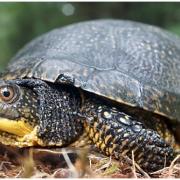
Turtle Talk
Maine has eight species of semi-aquatic turtles that inhabit a number of regions and ecosystems across the state. Turtles are a unique group of reptiles, with an anatomical design that ensures protection from a number of predators. A turtle’s shell, or carapace, is made of hard bony plates covered in scutes, which are the same material as our fingernails. Fused to the inside of their shell is their spinal column and the belly side of the turtle shell, the plastron, are the fused ribs and sternum. So, a turtle’s shell is a unique armor that a turtle physically cannot live without.
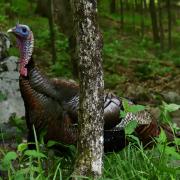
The Tick and Turkey Debate
Turkeys and ticks have long been a topic of conservation, with Maine’s wild turkeys sometimes taking the blame for causing problems for Maine’s moose as a spreader of ticks, the proliferation of ticks in Southern Maine, and the negative impacts on humans that come with the ectoparasite.
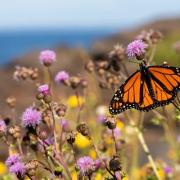
Mowing for Monarchs
Butterflies are a fan favorite when it comes to fluttering invertebrates, and in addition to their beauty, they bring a number of benefits to our lives. Butterflies play an important ecological role as prey to a number of larger species such as dragonflies and birds and are vital pollinators for wildflowers.
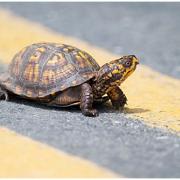
Turtle Crossing
Turtles are long-lived animals that take many years to reach reproductive ages, in the range of 10-15 years for many Maine turtles. Their delayed maturity coupled with low hatching success creates exceptional challenges for survival. The annual loss of just a few adults to roadkill can lead to a population decline or even local extinction.
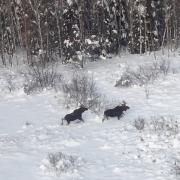
Monitoring Moose from the Skies
If you spent any time snowmobiling in certain areas of northern Maine this winter, you may have looked up to see a low flying helicopter scouting over the trees. This helicopter carried one Forest Pilot Ranger of the Maine Forest Service and three of Maine’s wildlife biologists, including the moose biologist, Lee Kantar on their annual aerial moose counts. From late December to mid-February, having snow on the ground allows greater contrast of moose on the landscape, making it easier to spot them while flying. The helicopter flies over specific sections in districts that best represent Maine’s core moose range and habitat.
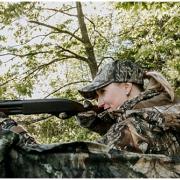
Turkey Hunting: The Shot and Next Steps
The Department concluded a three-part spring turkey hunting panel discussion series on April 7, 2021. In the final episode of this series, three MDIFW staff members and avid turkey hunters retired Rec Safety Coordinator Reggie Read, Wildlife Special Projects Coordinator Bob Cordes, and current Rec Safety Coordinator Jasmine Pomerleau discussed the key features of the shot and after the shot.
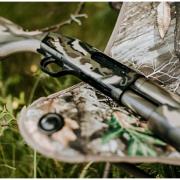
Turkey Hunting Gear
As part of a panel discussion series concluding April 7, 2021, the Department hosted a live panel discussion on March 31 with three MDIFW staff members and avid turkey hunters: Fisheries Resource Supervisor Liz Thorndike, retired Rec Safety Coordinator Reggie Read, and Wildlife Special Projects Coordinator Bob Cordes. This conversation focused on turkey hunting gear and calls.
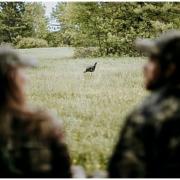
Understanding Spring Turkey Behavior + Scouting Tips
Spring turkey hunting is an excellent way to celebrate the end of winter. It’s a fun, interactive hunt, providing plenty of opportunity across the state. On March 24, the Department hosted a live panel discussion with three MDIFW staff members and avid turkey hunters: Turkey + Other Game Bird Biologist Kelsey Sullivan, Fisheries Resource Supervisor Liz Thorndike, and retired Rec Safety Coordinator Reggie Read.
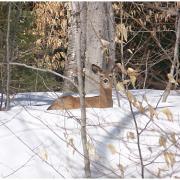
Winter Severity Index
Extended periods of deep snow and cold temperatures during winter can have a significant effect on the survival of white-tailed deer in Maine, especially in the northern part of the state. MDIFW has long recognized this relationship and has spent, and continues to spend, considerable resources in terms of workforce hours to collect information that helps us better understand this dynamic.
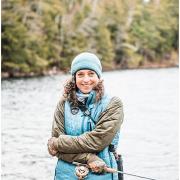
Women in Wildlife
I recently read an article by a female colleague celebrating women in science and how far we have come in how we are treated. Yes, we have made great progress, yet nearly every day I am reminded how far we must go.
Keep In Touch!
Enter your email or mobile number to receive the latest news from MDIFW.